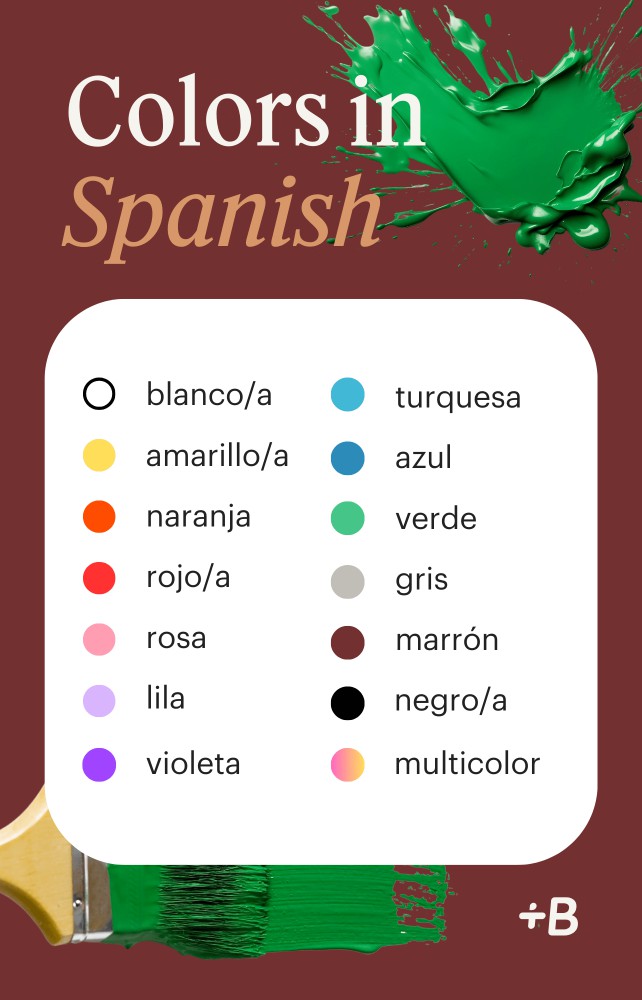Imagine a world in black-and-white. Some of you Instagram aficionados or classic movie lovers might find it charming at first, but after a while, you’d probably miss the vibrant colors that make up our daily lives. The gleaming yellow sun, the crisp blue water, the lush green grass and trees, even the multicolored palette of food you eat throughout the day.
When you’re learning your basic Spanish vocabulary, you want that new world to be in color, too. You may need to know how to distinguish between clothing items, foods, cocktails or cars, and how to describe the various people, places and things you see during your travels. Here’s a brief guide to the colors in Spanish, and how to pronounce them.
The Colors In Spanish
Color vocabulary can be massive. Once you get beyond the main six or seven rainbow colors, there’s a vast spectrum of terms. These are the most common ones you’ll see, but keep in mind it’s only a starting point.
The color — el color
Red — rojo/a
Orange — naranja
Yellow — amarillo/a
Green — verde
Blue — azul
Cyan — cian
Turquoise — turquesa
Violet — violeta
Purple —lila
Pink — rosa
Brown — marrón
Black — negro/a
Gray — gris
White — blanco/a
Silver — plateado/a
Gold — dorado/a
Light — claro/a
Dark — oscuro/a

Using Colors In A Sentence
Colors are adjectives like any others in Spanish, which means they usually come right after the noun they’re describing. That also means that depending on the gender and number of the noun, the adjective will have to change. Fortunately, it follows the same rules as any other adjectives.
Gendered Colors
For all the adjectives listed above that end with o/a, the ending changes depending on the noun’s gender (“o” for masculine and “a” for feminine). Colors like gris and azul don’t change at all. The ones that might trip you up are the colors like violeta, naranja and rosa, which end in an “a” regardless of the noun (there is no carro violeto).
- ¿Dondé está la casa roja? — Where is the red house?
- Me gusta el gato naranja. — I like the orange cat.
- Compré una camisa amarilla. — I bought a yellow shirt.
- Necesita un bolígrafo negro. — He/she needs a black pen.
Plural Colors
If a noun is plural, you have to add an “s” to the color if it ends in a vowel, or an “es” to the color if it ends in a consonant.
- Come tus vegetales verdes. — Eat your green vegetables.
- Los paraguas azules están abiertos para la lluvia. — The blue umbrellas are open for the rain.
- Los autobuses amarillos llegan al mismo tiempo. — The yellow buses arrive at the same time.
- Me encantan los dulces marrones. — I love the brown candies.
Quiz Yourself On Spanish Colors!
Alright, you’ve got the basics, now see how much you already know.
Is all this too easy for you? You might want to evaluate your Spanish level and tackle something more complicated. Maybe on the Babbel app?

Comment